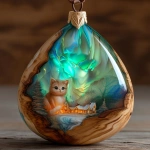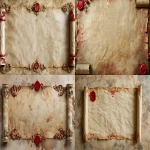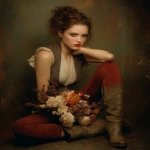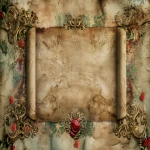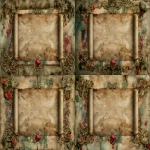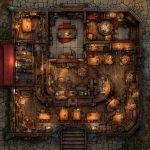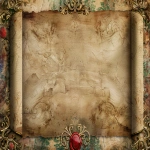Explore the Best AI Image Gallery
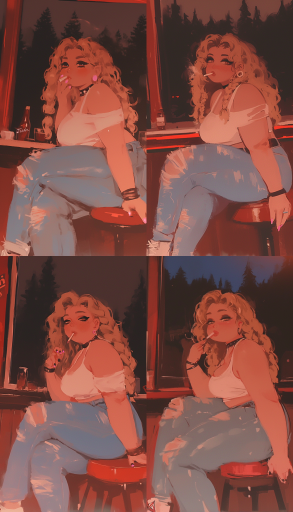
The Intersection of AI and Digital Creativity: A New Era of Innovation
Artificial Intelligence (AI) is rapidly changing the landscape of creative industries, facilitating a new realm of digital creativity. As where human imagination once reigned supreme, AI now serves as both a collaborator and a creative tool, reshaping the artistic process in unprecedented ways. This post explores the multifaceted impacts of AI on digital creativity, potential applications, and significant ethical considerations.
AI's Impact on the Creative Industry
AI technology is increasingly being recognized for its ability to generate content across various mediums, including visual art, music, and writing. Programs like DALL-E and DeepArt use machine learning algorithms to analyze and generate new images based on user prompts, allowing artists to explore new styles and ideas.
In the music industry, AI models such as AIVA and Amper Music harness vast datasets to compose original pieces. Musicians can use these tools to spark creativity, create background scores, or even collaborate with AI as a digital band member. These innovative uses of AI tools help bypass traditional creative barriers, leading artists to experiment and push artistic boundaries.
Potential Uses of AI in Creativity
AI is not just about generating art; it extends into various creative domains, offering numerous applications:
- Graphic Design: AI tools like Canva and Adobe Sensei allow designers to streamline their workflow, automating tasks such as image resizing, color matching, and even layout design. This not only saves time but also enhances creativity by allowing designers to focus on the concept rather than the minutiae.
- Content Creation: Platforms like ChatGPT are transforming writing, enabling marketers, content creators, and authors to generate ideas, articles, and even storylines rapidly. The use of AI in script-writing and journalism exemplifies its versatility in the writing sphere.
- Fashion Design: AI algorithms analyze trends and predict future styles, enabling designers to create clothing lines that resonate with contemporary consumers, thus revolutionizing the fashion industry.
- Game Development: AI enhances video game design by creating realistic non-playable characters (NPCs) and dynamically adjusting gameplay based on player actions, leading to more immersive gaming experiences.
Ethical Considerations
While AI's role in creativity presents innovative opportunities, it also raises crucial ethical concerns. Here are some primary considerations:
- Copyright Issues: As AI generates art, questions arising about ownership and intellectual property become pertinent. If a piece created by an AI algorithm incorporates existing works, who holds the rights to that piece?
- Authenticity: The increasing ease of generating content may devalue human artistry and creativity. The lines between original pieces and those generated by machines become blurred, prompting discussions about the true definition of art.
- Bias in Algorithms: AI models are only as good as the data they are trained on. If diversity and representation are lacking in datasets, the resulting art may inadvertently perpetuate stereotypes and biases.
Future Trends
As AI technology continues to evolve, several trends are emerging in the digital creative landscape:
- Augmented Creativity: Artists, musicians, and writers are likely to embrace AI as a co-creator rather than a replacement. This shift implies a future where human creativity and machine intelligence blend to form new art forms.
- Personalization: AI will cater increasingly to individual preferences, allowing users to generate bespoke content tailored to their tastes and styles, thus fostering a more personalized creative experience.
- Expansion of Accessibility: As AI tools become more user-friendly and accessible, they will democratize creativity, allowing individuals without formal training to explore their artistic potential.
Conclusion
The intersection of AI and digital creativity is redefining how art is conceived, produced, and consumed. While the benefits of AI as a creative partner are undeniable, it remains crucial to navigate the ethical implications and responsibilities that come with integration of AI in the arts. As we move forward, one thing is clear: the future of creativity lies in a harmonious blend of human imagination and artificial intelligence.
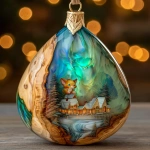
](https://images.ai-img.art/thumbnails/150/7599c9e7507c77a975081d554947c9dea123e678a7ece42d30f571f639620598.webp)
](https://images.ai-img.art/thumbnails/150/031692dcf8fbf869092e8cea50f9411a45dadc1f189ea67b8dece8e02952a7e3.webp)
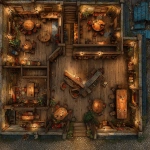
](https://images.ai-img.art/thumbnails/150/efd8a9ad06ef2c72e3378698ad5e592d3d2bf8eff85c25e75db7c9902c7be353.webp)
